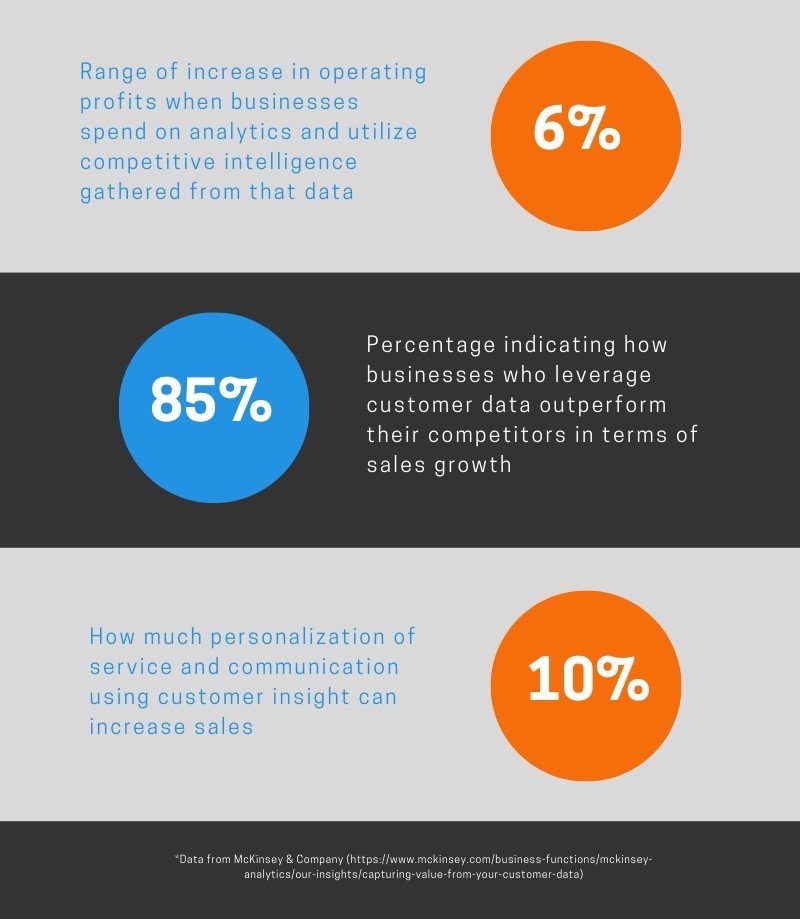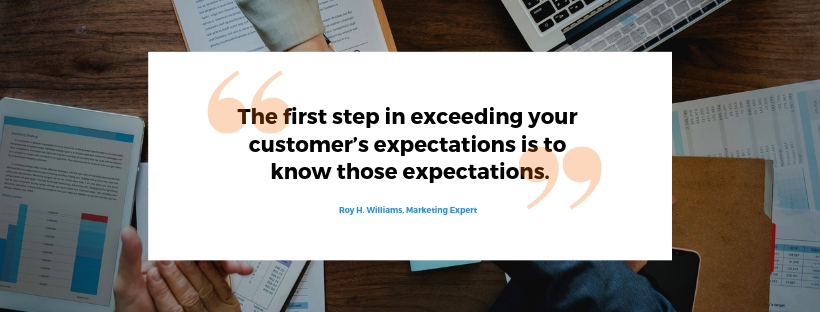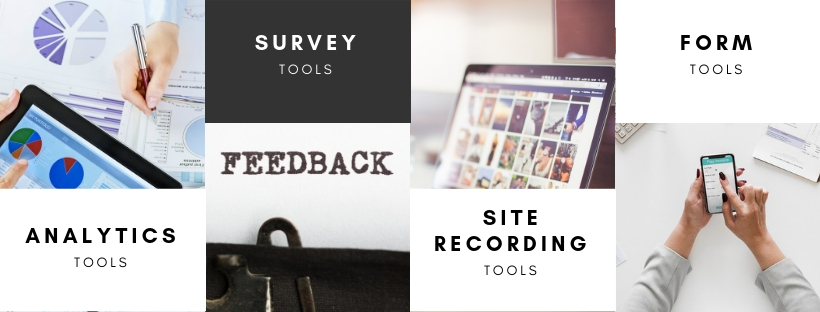Using Customer Insight to Spur Business Growth

The world of business is rife with competition. It’s a place where rival companies constantly come up with new strategies to one-up each other and attract the most customers. If you want to keep up with or surpass the competition, you need to learn exactly what your customers expect from you and to exceed those expectations. Fortunately, improvements in technology have allowed businesses of all sizes (and budgets) to easily gather customer data.
In an article published by McKinsey & Company dated March 2017, they mentioned how a survey of 700 organizations revealed that:
“… Spending on analytics to gain competitive intelligence on future market conditions, to target customers more successfully, and to optimize operations and supply chains generated operating-profit increases in the 6 percent range.”
A handful of other relevant data from the same article suggest how important it is to leverage customer insight to stimulate business growth and development:
- Organizations that leverage customer behavioral insights outperform peers by 85 percent in sales growth and more than 25 percent in gross margin.
- Personalization can deliver five to eight times the return on investment on marketing expenditure, and can lift sales by 10 percent or more.

The relevance of customer data in business growth and expansion isn’t limited to eCommerce or to more established companies either. There are practically hundreds of data points available to small businesses in every industry, and each one of these data points can be utilized to improve a certain aspect of business such as customer retention, marketing strategies, customer experience, and so on and so forth.
Getting started with using customer insight to spur business growth
Imagine this scenario: you, a small business owner with limited funds, pump your money into as many marketing opportunities as possible hoping to find at least one or two that works. You invest in TV, radio, and print advertising. You hire experts to work on email marketing, SEO, and online advertising. You even have one or more people doing cold calling to gather more leads.
In the end, you end up with maybe a marginal increase in sales or conversions, but you have no idea which of your strategies brought the positive change about. You lost hundreds or thousands of money on trial and error and still ended up empty handed in terms of knowing what strategy or strategies you need to focus on. This is just one of the things that customer insight can keep you from.

When you are just getting started with using customer insight to drive your company’s scaling or growing strategies, it’s pretty easy to be overwhelmed by the seemingly endless data points you can collect. Gone are the days when you need exceptional powers of persuasion to get to know your customers better. With technology, you can learn where your customer is from, what device they’re using to browse your website, what pages or products they’re looking at, when they usually go online, and so on. You can even see their activity outside your website, and target them on the other sites and pages they visit!
Yes, tech has allowed business owners unprecedented insight into their customers’ data, but it’s still not that amazing to be able to tell you what to do with these data as well. To give you an idea about what data to utilize to improve customer experience, boost sales, and spur growth, here are some examples of customer information you can gather and how you can utilize these data to reach you business goals:
- Big data that you can glean from comprehensive analytics software
In an article from SAS explaining the history, evolution, and importance of big data analytics, research from Tom Davenport entitled Big Data in Big Companies, detailed how 50 big companies use big data to explore business opportunities. He found that the value presented by big data to these companies lie in 3 major aspects: cost reduction, faster decision making, and new products and services.
- Behavioral data on your website or online store
As you monitor how customers behave on your website, what buttons they click, how long they stay on each page, their page view history, and so on, you get relevant information on what parts of your website work and which ones don’t.
One good example is a “rage click.” When a user clicks on a certain part of your page repeatedly and rapidly, you might deduce that they are frustrated because your website doesn’t allow them to do what they want to do. When this happens constantly on a specific page (e.g. your checkout page) you can postulate that maybe the checkout process is taking too long or that perhaps your payment options are lacking.
Analyzing behavioral data is an excellent way to improve user experience and, consequently, customer service.
- Personal customer data (e.g. name, interests, the preferred mode of communication, etc.)
Personalization in your marketing goes a long way towards customer satisfaction and loyalty. This is especially helpful with email marketing. If you use email to promote products to consumers, you want to give them products that they are likely to be interested in. Using their first name in the subject line is another simple but effective way to increase open rates.
- Combination of the above data
By combining big data, behavioral data, and personal customer data, you can reach out to your customers with the content they want and when they want it. Learn from the experts! Top companies like Amazon, Spotify and Netflix use customer insight to deliver highly personalized messaging and recommendations to their audience.
Using virtual assistant services to gather and interpret customer insight
Knowing what types of data to gather is all well and good, but it’s just as important to work out how to gather and interpret these data first.
Aside from looking into the massive list of tools and software you can use to gather useful customer insights, you also need to look at human resource solutions. As helpful as various tools, apps, and software, there’s no point in gathering all these user data without understanding these insights and taking specific action to make these insights work for you.
For small business owners, and sometimes even for established companies looking into a mixed workforce, virtual assistance holds the key to cost-effective but reliable staffing solutions.
There are plenty of ways hiring a virtual assistant (VA) can help you leverage customer insight:
- A customer service VA can help you collate customer feedback and analyze the most common pain points in your customer journey.
- An SEO specialist VA can create an easy-to-understand report based on the massive data provided by your data analytics tools. They can interpret these data and tell you what it means for your business in terms of the cost of customer acquisition, and getting more mileage for your organic marketing budget.
- A VA specializing User Experience (UX) can conduct focus group discussions, monitor customer behavior on your website, and conduct surveys to help you understand your consumers better and improve their experience.
A virtual assistant can do more than just admin tasks for you. When you hire a highly skilled VA from reputable virtual assistant companies, you can specify the exact skill you are looking for. Virtual assistance combined with leveraging customer insight is absolutely one of the best small business growth strategies these days.
Tools to help you gather customer insight
Of course, your VA’s input goes hand-in-hand with the data you gather from whatever software and methods you’ve chosen to collect customer data.

Here are some types of tools and methods you can use to gather customer insights:
- Analytics tools
Analytics tools like Google Analytics are excellent tools for gathering big data and generating reports for your VA or other staff to analyze.
- Survey tools
You can send out surveys online to gather important feedback from consumers about your products and services.
- Website recording tools
Website recording tools like Inspectlet allow you to see the pitfalls in your website that are detrimental to your users’ customer journey. This data helps you resolve usability issues and provide a much smoother user experience.
- Form creation tools
Forms on your website can be incredibly useful in gathering customer feedback and opinion.
On top of these, you can still go old school with manual feedback gathering through calls or emails. Feedback on your social media pages and review sites can be extremely helpful too.
Like in many other aspects of business, there is no single best strategy for business growth that is sure to work for anyone and everyone. However, leveraging customer insight is one of the most highly effective ways to reach the average business growth rate and get to where your major competitors are — and even surpass them.
By using customer insight to spur business growth, you put your customer at the center of all your strategies. This works wonders because your customers are the main drivers of growth and the more you please them, the faster you grow.










